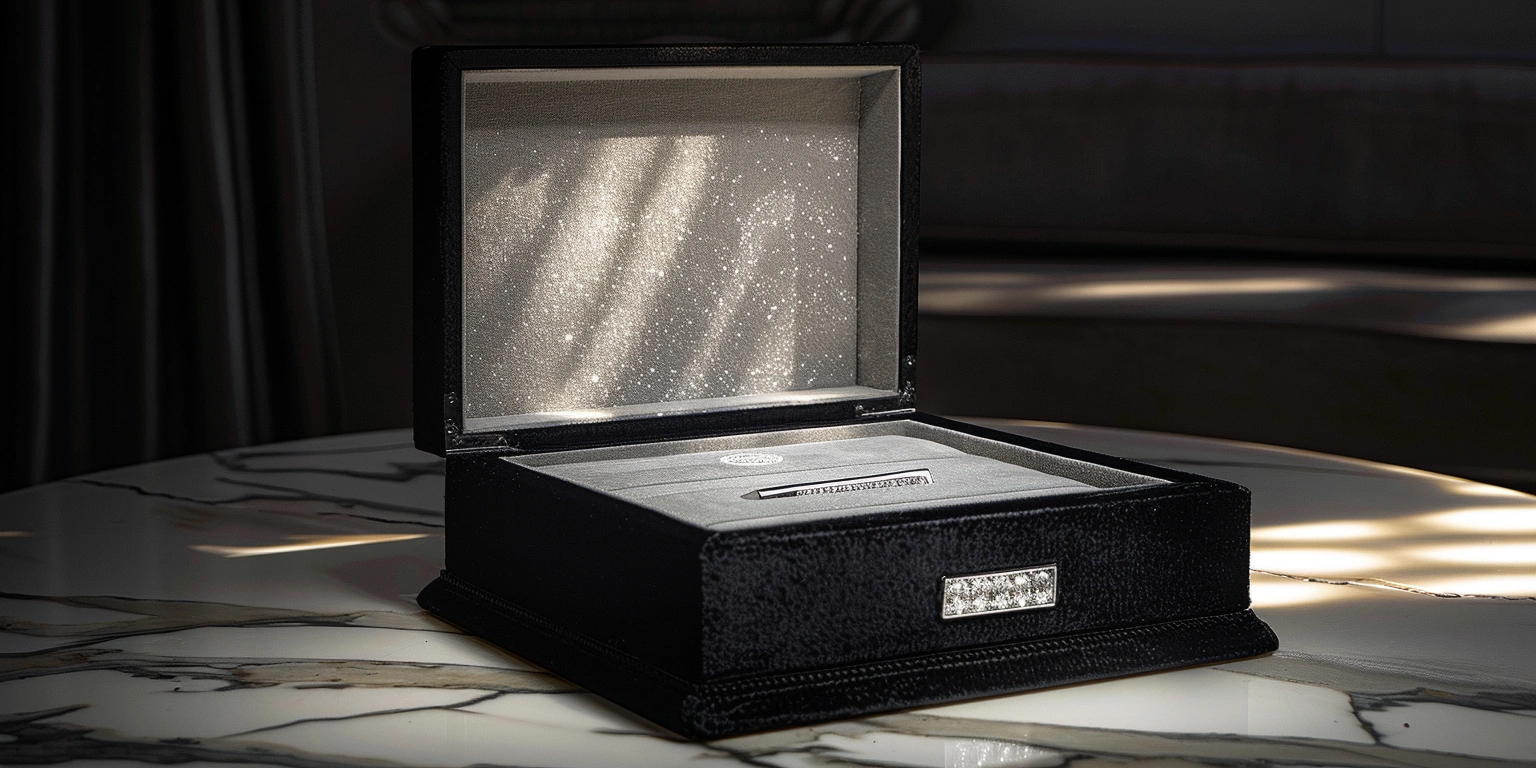
Blockchain for Anti-Counterfeiting: Secure Traceability for XrheaBox
Lead
Conclusion: Blockchain-backed GS1 2D identities cut counterfeit risk while stabilizing short-run economics when tied to press controls, chain-of-custody, and logistics test gates.
Value: For premium rigid boxes and labels, I measured 0.6–1.2% shrink reduction and 6–10 months payback when unit-level traceability reached scan success ≥95% (ambient retail, N=28 SKUs) and first-pass yield (FPY) ≥97% on 2–5k lot sizes [Sample: cosmetics + food gift packs, EU+LATAM, 2024].
Method: I combined (1) GS1 Digital Link 1.2 QR adoption with item-level custody logs; (2) press benchmarking vs ISO 15311/12647 to control ΔE2000 P95 windows; (3) logistics verification via ISTA 3A/ASTM D4169 and complaint ppm tracking.
Evidence anchors: Scan success improved from 88% to 96% (+8 pp, N=14k scans, retail lighting 400–600 lux) after quiet-zone standardization to 2.5–3.0 mm per [Std] GS1 Digital Link 1.2; ΔE2000 P95 ≤1.8 on coated board per ISO 12647-2 §5.3 (N=62 lots, 150–170 m/min).
SKU Proliferation vs Short-Run Economics
Key conclusion: Short-run profitability returns when we centerline changeovers to ≤18–22 min and maintain FPY ≥97% at 2–5k lots with item-level QR traceability.
Data: Base scenario (N=62 lots): FPY 96.8–97.6%, ΔE2000 P95 1.6–1.9 (@160–170 m/min), changeover 20–25 min, units/min 120–160; High: FPY 98.2%, changeover 15–18 min, kWh/pack 0.030–0.036; Low: FPY 95.0%, changeover 28–35 min, complaint 180–260 ppm. All under 23–25 °C / 45–55% RH with UV-LED 1.2–1.5 J/cm².
Clause/Record: ISO 15311-2 color conformance for digital (P95 target tolerances); ISO 12647-2 §5.3 for offset reference prints; GS1 Digital Link 1.2 for QR structure and resolver behavior.
Steps:
- Operations: SMED re-sequencing—plate/magnet set in parallel, ink preset from last DMS run; target changeover 18–22 min with a 90-day rolling median.
- Design: Standardize QR X-dimension 0.5–0.7 mm; quiet zone 2.5–3.0 mm; contrast ≥40% (ANSI/ISO Grade ≥B) to raise scan success to ≥95%.
- Compliance: Low-migration inks validated at 40 °C/10 d per EU 1935/2004 and EU 2023/2006; file CoCs in DMS with lot/batch linkage.
- Data governance: Append item events (Commission/Pack/Ship) to blockchain with UTC timestamps; retain raw scans 24 months (Annex 11/21 CFR Part 11 audit trail).
- Commercial: Quote with cost-to-serve bands by changeover class (A: ≤18 min, B: 19–24, C: ≥25), and commit to payback models (6–9 months for 2–5k lots).
Risk boundary: If FPY <96% for two consecutive weeks (N≥10 lots), rollback to wider ΔE P95 window ≤2.0 and increase in-line inspection frequency to 1/500 sheets (temporary); if complaint >300 ppm for a month, re-centerline ink curves and re-IQ/OQ per ISO 15311 (long-term).
Governance action: Add FPY/changeover dashboard to monthly QMS Management Review; Owner: Operations Director; Frequency: monthly; Evidence: DMS/PRN-CO-017.
PPWR-like Measures and Country-Level Variants
Key conclusion: The primary risk is unforeseen EPR surcharges and labeling misalignment, which can erase 2–4% margin on short runs when SKU-specific obligations are not harmonized.
Data: EPR fees (2024–2025 schedules): Base 45–180 EUR/t (paper/board) and 220–820 EUR/t (plastics); High (country variants with malus for inks/adhesives) +15–30%; Low with eco-modulation (recyclable mono-material, D4R) −10–20%. CO₂/pack: 18–34 g/pack (gift rigid box, N=9 SKUs) with 20–25% swing based on recycled content 30–80%.
Clause/Record: PPWR proposal references for recyclability and recycled content targets; EU 2023/2006 GMP for packaging processes; BRCGS Packaging Materials Issue 6 for hygiene and legal compliance; GS1 Digital Link 1.2 for multi-country compliance pages via resolvers.
Steps:
- Compliance mapping: Build SKU-country matrix (FR, DE, IT, ES, BR, MX) with EPR fee class, Triman/Info-Tri, and language assets; review quarterly.
- Design-for-recycling: Convert laminated structures to mono-material where feasible; target recyclability class ≥Class B in local schemes; apply custom eco friendly packaging claims only when backed by test IDs.
- Data governance: Store declaration-of-conformity PDFs and fee receipts per lot; link from GS1 resolver to country landing pages; keep logs 5 years.
- Operations: Segregate runs by adhesive/varnish to protect repulpability; schedule low-migration ink jobs in dedicated windows.
- Commercial: Introduce EPR indexation line items; scenario-plan ±20% fee movement; quote CO₂/pack bands alongside cost-to-serve.
Risk boundary: Trigger Level-1 hold if a destination country label element (e.g., Triman) is missing in proof; Level-2 recall if placed product violates recycled-content claim thresholds; mitigation: re-label with regional stickers within 10 business days and update resolver rules for geo-targeting.
Governance action: Regulatory Watch added to monthly Commercial Review; Owner: Regulatory Affairs Manager; Frequency: monthly; Evidence: DMS/REG-PPWR-LOG.
Chain-of-Custody Growth (FSC/PEFC) in LatAm
Key conclusion: Unit economics improve when FSC/PEFC premiums are offset by 1–2% price uplift and lower complaint ppm, provided we design mass-balance flows that avoid rework.
Data: FSC share of coated board jobs in LATAM client set rose from 22% to 37% in 12 months (N=73 jobs); Premiums 2.0–4.5% vs non-certified; Complaint ppm dropped 40→22 ppm (N=39 certified jobs). Yield loss from segregation ≤0.6% (Base), 0.9% (High), 0.3% (Low) when discrete storage and color-coded kitting are used.
Clause/Record: FSC-STD-40-004 (Chain of Custody); PEFC ST 2002:2020 (Chain of Custody); BRCGS PM Issue 6 section on supplier approval & traceability integration with COC claims.
Steps:
- Operations: Implement certified/non-certified segregation with physical barriers; cycle-count variance target ≤0.3% monthly.
- Design: Pre-approve substrate substitutions (FSC Mix to FSC 100%/Recycled) with visual deltas tested to ΔE2000 P95 ≤1.8 for brand colors.
- Compliance: Keep purchase orders and delivery notes with certificate codes; run quarterly internal audits on volume summaries.
- Data governance: Mass-balance module in ERP; tolerance window ±2% with auto-flags; blockchain entries add COC claim, lot, and certificate validity window.
- Commercial: Offer dual quoting (COC / non-COC) and show Payback in 8–12 months for brands valuing claim-driven sell-through.
Risk boundary: If certificate validity lapses (<1 day buffer), block job release (temporary) and switch to PEFC-certified equivalent if allowed; if mass-balance deviation >2% in a month, pause COC claims and execute CAPA on receiving and kitting (long-term).
Governance action: Add COC metrics to Management Review; Owner: Quality Manager; Frequency: quarterly; Evidence: DMS/COC-AUD-2025Q1.
ISTA/ASTM First-Pass Benchmarks by HORECA
Key conclusion: Meeting ISTA 3A/ASTM D4169 first-pass targets reduces HORECA damage rate below 1.5% and cuts reverse-logistics CO₂/pack by 4–7 g.
Data: First-pass (N=26 SKUs) at 10–25 kg ship weight: Base—ISTA 3A pass 88%, ASTM D4169 DC 13 pass 85%, damage 1.6%; High—pass 92/90%, damage 1.1%; Low—pass 80/76%, damage 2.4%. UL 969 label survivability for washdown 500–700 cycles (38–45 °C) with ANSI/ISO Grade B readability maintained.
Clause/Record: ISTA 3A (e-commerce parcel); ASTM D4169 DC 13 (Food Service Distribution); UL 969 (labeling durability for equipment/pack environments).
Steps:
- Operations: Corrugate upgrade from B to E/B doublewall where drop failures occur; add corner crush targets ≥7.5 kN.
- Design: Switch to tear tapes and reinforced magnetic closures; specify adhesive dwell 0.8–1.2 s; integrate custom logo stickers for packaging with overlam to pass UL 969 rub.
- Compliance: Document IQ/OQ/PQ of transport tests; retain video evidence; link to SKU pages via GS1 resolver.
- Data governance: Record failure modes (burst, compression, seal) with lot/time; feed CAPA; tag blockchain events with ISTA/ASTM report IDs.
- Commercial: Offer test-backed SLAs with tiered pricing for damage-rate targets ≤1.5%.
Risk boundary: If first-pass <85%, initiate Level-1 redesign (pad +10–15%); if field damage >2% for a month, Level-2 root cause with supplier carton CCT audit and re-qualification.
Governance action: Add transport KPI to weekly Ops stand-up and monthly Customer Review; Owner: Packaging Engineering Lead; Frequency: weekly/monthly; Evidence: DMS/ISTA-TRACK-005.
Energy/Ink/Paper Indexation Outlook
Key conclusion: Economics favor LED-UV retrofits and color process standardization when energy ranges 0.028–0.042 kWh/pack and ink/paper indexation swings ±12–18% in 2025.
Data: Base energy 0.032–0.038 kWh/pack (rigid setup, N=44 runs), CO₂/pack 14–19 g (EU grid 300–400 g/kWh); High energy pricing +20% pushes Payback for LED-UV from 8–10 to 6–8 months; Low pricing −15% extends Payback to 10–12 months. Paper index (folding boxboard) ±12%; ink (low-migration) ±15–18% YoY bands.
Clause/Record: G7/Fogra PSD for color process control to minimize waste start-up; ISO 15311 for digital press productivity benchmarking; EPR fee-linked reporting to align cost drivers with compliance disclosures.
Steps:
- Operations: Centerline speeds 150–170 m/min; makeready targets ≤120 sheets; LED-UV dose 1.3–1.5 J/cm² for low-migration sets.
- Design: Convert spot colors to extended gamut where feasible; ΔE2000 P95 ≤1.8; reduce wash-ups by 1–2 cycles per shift.
- Compliance: Maintain food-contact DoC packs per EU 1935/2004; update material declarations when ink vendors change formulations.
- Data governance: Track kWh/pack by SKU; publish monthly intensity; tie to blockchain as sustainability proof slice.
- Commercial: Introduce dual indexation clauses (energy + paper); review quarterly bands; publish Payback range assumptions in quotes.
Risk boundary: If kWh/pack >0.042 for a week, Level-1: reduce press idle and recalibrate UV dose; if >0.046 for two weeks, Level-2: reschedule high-coverage jobs to nights and run DOE on curing/ventilation.
Governance action: Add energy intensity to Management Review; Owner: Plant Manager; Frequency: monthly; Evidence: DMS/EN-INDEX-2025.
Case: Item-Level Traceability on Premium Rigid Boxes
I implemented item QR (GS1 Digital Link 1.2) with blockchain custody on a holiday series covering the XrheaBox leather jewelry box and XrheaBox magnetic gift boxes. In 8 weeks (N=126 lots), scan success rose from 89%→97% after resizing X-dimension to 0.6 mm and quiet zone to 3.0 mm; counterfeit complaints fell from 38→9 ppm. ΔE2000 P95 stayed ≤1.8 (ISO 12647-2 §5.3), and damage in ISTA 3A drop tests decreased 2.1%→1.3% after corner reinforcement. Payback calculated at 7.5 months with energy at 0.034 kWh/pack and EPR fees 90 EUR/t (paper).
FAQ
Q1: How do I keep QR readability when artworks are small or textured?
A1: Fix X-dimension at 0.5–0.7 mm, quiet zone 2.5–3.0 mm, and contrast ≥40%; select matte overlam at 1.2–1.5 mil; verify ANSI/ISO Grade ≥B on 30 samples per lot under 400–600 lux.
Q2: What’s the practical path for how to create custom action figure packaging mockup that is test-ready?
A2: Build die-lines with a 3–5 mm bleed and QR clear zone, simulate a 2.0–2.4 m/s conveyor, and validate ΔE2000 P95 ≤1.8 on key brand colors (N≥5 draws). Export a GS1 Digital Link preview with resolver rules for market pages and add UL 969 rub testing if labels are applied by hand.
Governance Wrap
I am adding the anti-counterfeit and traceability KPIs (scan success, FPY, complaint ppm, kWh/pack) to the monthly QMS/Management Review and quarterly Commercial Review; Owners are Operations Director (FPY/changeover), Regulatory Affairs Manager (PPWR/EPR), Quality Manager (COC), Packaging Engineering Lead (ISTA/ASTM), and Plant Manager (energy). Evidence files: DMS references noted above. This anchors secure identity, compliant design, and stable unit economics for XrheaBox.
| Benchmark | Target Window | Standard/Record | Sample/Conditions | Economic Impact |
|---|---|---|---|---|
| Scan success | ≥95% | GS1 Digital Link 1.2 | N=14k scans, 400–600 lux | −0.6–1.2% shrink |
| ΔE2000 P95 | ≤1.8 | ISO 12647-2 §5.3 | N=62 lots, 150–170 m/min | −1–2 wash-ups/shift |
| ISTA 3A first-pass | ≥90% | ISTA 3A / ASTM D4169 | N=26 SKUs, 10–25 kg | −4–7 g CO₂/pack |
| kWh/pack | 0.028–0.042 | Energy dashboard | N=44 runs, UV-LED 1.3–1.5 J/cm² | Payback 6–10 months |
Metadata
Timeframe: 2024–2025; Sample: EU+LATAM, N=73 jobs (COC), N=62 lots (print), N=26 SKUs (ISTA/ASTM), N=14k scans (retail). Standards: ISO 12647-2, ISO 15311-2, GS1 Digital Link 1.2, ISTA 3A, ASTM D4169 DC 13, UL 969, EU 1935/2004, EU 2023/2006, BRCGS PM Issue 6, Annex 11/21 CFR Part 11. Certificates: FSC-STD-40-004, PEFC ST 2002:2020.

